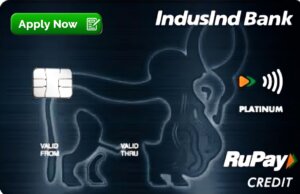Introduction
Money has always been a driving force in human history. From the earliest forms of barter to today’s digital economies, the way societies use and perceive money has changed dramatically. But in the modern financial landscape, a new kind of currency is emerging—one that holds far more influence than traditional money. Often referred to as “super money,” this concept goes beyond physical cash or numbers in a bank account. It represents wealth that shapes economies, steers political decisions, and evolves alongside technology. This article explores what super money is, how it developed, its current forms, and its potential to reshape the world.
What Is Super Money?
“Super money” isn’t a technical term used in economics, but it captures a powerful idea. It refers to highly influential and flexible forms of money or financial power that can influence markets, control resources, and even shift political outcomes.
Super money could refer to:
-
Highly liquid and mobile financial assets.
-
Capital held by powerful entities like hedge funds or central banks.
-
Decentralized digital currencies that challenge the traditional banking system.
-
Automated financial tools and AI-driven investments that outpace human decision-making.
At its core, super money isn’t just about wealth—it’s about leverage, speed, access, and influence in the financial system.
The Evolution of Money
To fully understand super money, it’s important to trace how money itself has changed over time.
From Barter to Currency
In ancient times, people exchanged goods and services directly through bartering. However, bartering was inefficient and limited in scale. Societies began using commodities like salt, spices, or cattle as primitive forms of currency, leading to more structured trade.
Coinage and Standardization
Metal coins made of gold, silver, and copper were introduced over 2,500 years ago. These coins had intrinsic value and made it easier to trade across distances and cultures.
Paper Currency and Early Banking
By the 7th century in China, paper money emerged as a more convenient alternative to metal coins. Over time, banks began issuing promissory notes, which eventually evolved into modern-day banknotes.
Fiat Money and Government Control
In the 20th century, countries moved away from backing their currencies with gold. Instead, they adopted fiat money—currency that holds value because a government declares it legal tender. This allowed central banks to have greater control over economies through interest rates and money supply.
Features That Define Super Money
Super money stands out from regular money because of several unique characteristics:
1. Speed of Movement
Today, capital can be transferred globally in seconds. Digital platforms, online banking, and blockchain technology allow super money to move quickly and seize opportunities instantly.
2. Impact and Influence
Super money can influence entire economies. Central banks printing trillions of dollars, or hedge funds making massive bets, can swing markets and influence government policies.
3. Global Accessibility
Traditional money is often tied to national borders. Super money—especially in digital or decentralized forms—can flow freely across countries, often with fewer restrictions and lower costs.
Super Money in Action Today
In the modern era, several powerful financial tools and entities can be seen as holders or creators of super money.
Central Banks as Super Money Creators
Institutions like the U.S. Federal Reserve and the European Central Bank have the authority to create money. Through quantitative easing and interest rate policy, they influence inflation, employment, and investment worldwide.
Sovereign Wealth Funds
Countries like Norway, China, and Saudi Arabia manage massive national investment portfolios known as sovereign wealth funds (SWFs). These funds invest in global markets and can influence industries, currencies, and even foreign policy.
The Rise of Cryptocurrencies
Cryptocurrencies such as Bitcoin and Ethereum represent a new, decentralized form of money. They bypass traditional banks, operate 24/7, and are secured by blockchain technology. These digital currencies empower individuals to control their finances without relying on central institutions.
AI-Driven Financial Tools
Artificial intelligence has transformed the finance world. From automated trading bots to predictive algorithms, AI tools can analyze data faster and more accurately than humans. They represent a powerful form of super money—where the speed and intelligence of decisions create a massive advantage.
The Dangers of Super Money
While super money offers new opportunities, it also introduces significant risks and challenges.
Inequality and Uneven Access
Super money is often controlled by wealthy individuals, large corporations, or governments. The average person has limited access to the tools and markets where super money operates, widening the wealth gap.
Market Volatility and Manipulation
Entities with vast amounts of capital can manipulate markets—intentionally or not. For example, hedge funds might cause market crashes or create speculative bubbles, hurting smaller investors in the process.
Erosion of National Control
Digital and decentralized forms of money reduce the power of governments to regulate their own financial systems. This can create loopholes in tax collection, money laundering prevention, and monetary policy enforcement.
Security Threats
Digital finance comes with cyber risks. Super money stored in digital wallets or transacted via algorithms can be vulnerable to hacking, fraud, and system failures.
Super Money’s Role in Individual Lives
What does all this mean for the average person?
Importance of Financial Education
In a world dominated by complex financial tools and rapid changes, financial literacy has become essential. Understanding how investments work, how inflation affects savings, and how to manage digital assets is crucial for navigating this new era.
New Investment Opportunities
Fintech platforms and decentralized finance (DeFi) are opening doors to investments that were once only available to institutions. People can now invest in global markets, real estate, and even art with small amounts of money.
The Creator Economy and Digital Monetization
Today, individuals can generate income by creating content, building personal brands, or launching online businesses. Platforms like YouTube, Substack, or blockchain-based NFTs allow people to turn their creativity into money—potentially even super money.

The Future of Super Money
As we look to the future, super money will likely continue evolving alongside technology and global trends.
Central Bank Digital Currencies (CBDCs)
Governments around the world are exploring CBDCs—digital versions of their national currencies. These could offer the convenience of cryptocurrency while being backed by state authority. They may revolutionize banking, payments, and international trade.
Tokenization of Assets
With blockchain, almost anything can be turned into a digital token—stocks, property, even intellectual property. This allows people to invest in fractional shares of assets, making markets more accessible and liquid.
Smarter Financial Systems
AI and big data will continue to refine how financial decisions are made. From personalized investment strategies to dynamic credit scoring, super money systems will become more responsive and intelligent.
Philosophical and Ethical Questions
As super money grows in power, it raises deeper questions about values and fairness.
-
Who controls super money? Are we creating a system where power becomes even more centralized?
-
Is money a tool for improving lives or just accumulating wealth?
-
Can we design financial systems that promote inclusion and equality, instead of division and disparity?
These questions remind us that while technology drives progress, human values must guide how we use financial power.

Conclusion
“Super money” is not just a catchy phrase—it reflects a shift in how money operates in the 21st century. Whether it’s AI-controlled funds, decentralized cryptocurrencies, or massive sovereign investments, these new financial forms are faster, smarter, and more influential than traditional money ever was.
But with this power comes responsibility. The challenge for governments, businesses, and individuals is to use super money not just for profit, but for progress. If used wisely, super money could bring about greater inclusion, innovation, and opportunity. If left unchecked, it could deepen existing inequalities and destabilize economies.
The future of money is not just digital—it’s supercharged. And as this transformation continues, we all have a role to play in shaping what that future looks like.

Read More: -









.jpeg)

